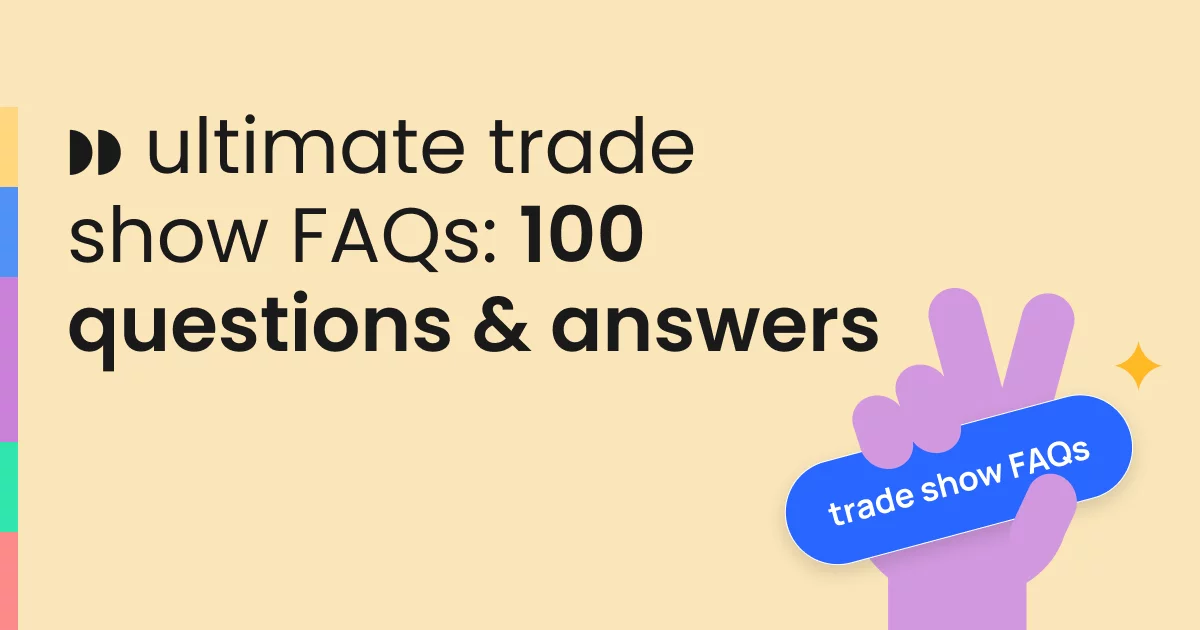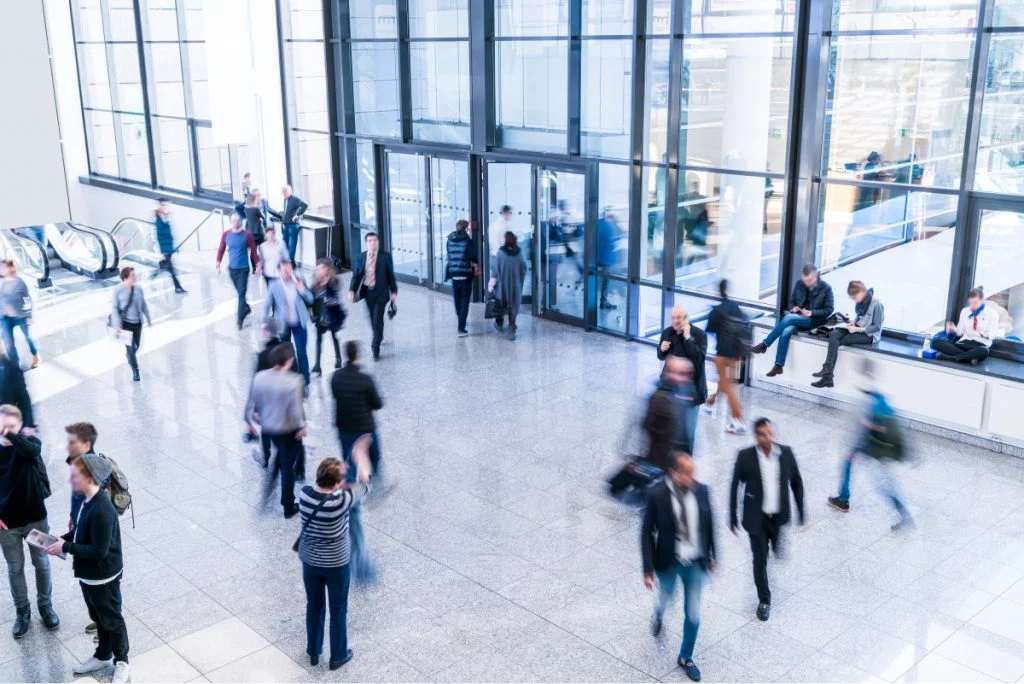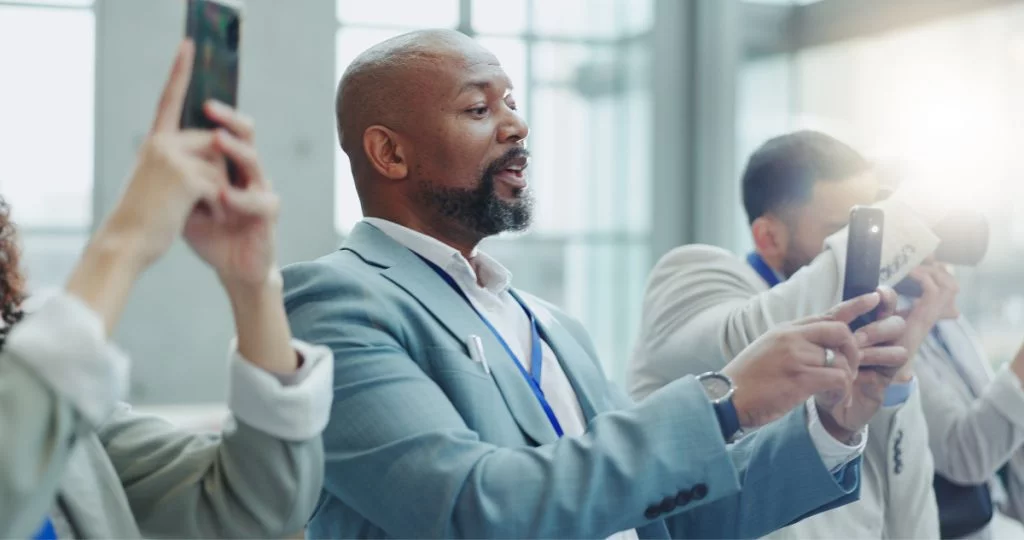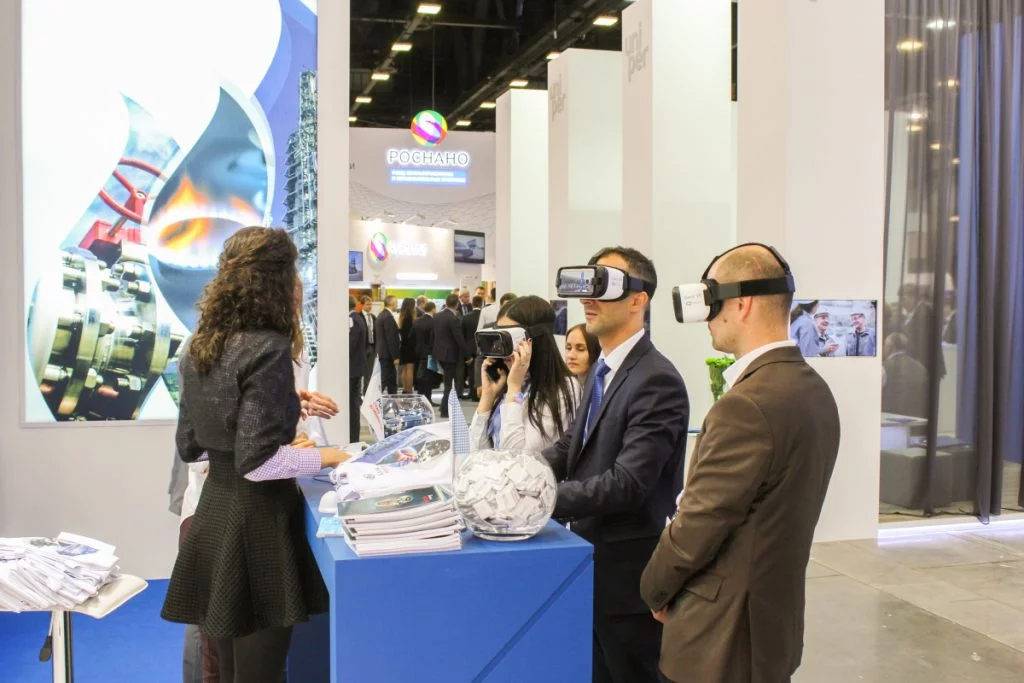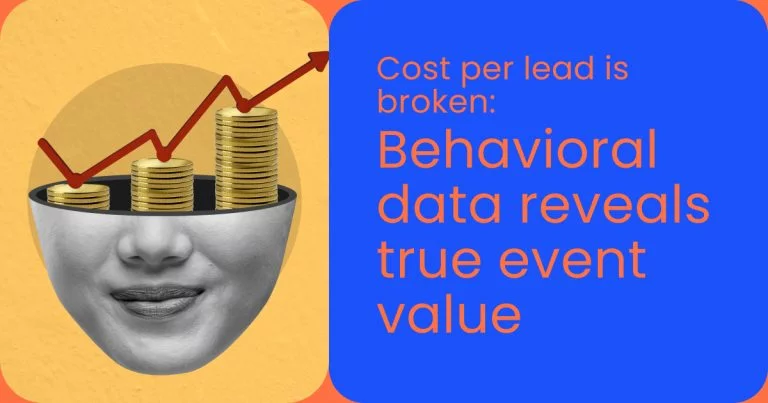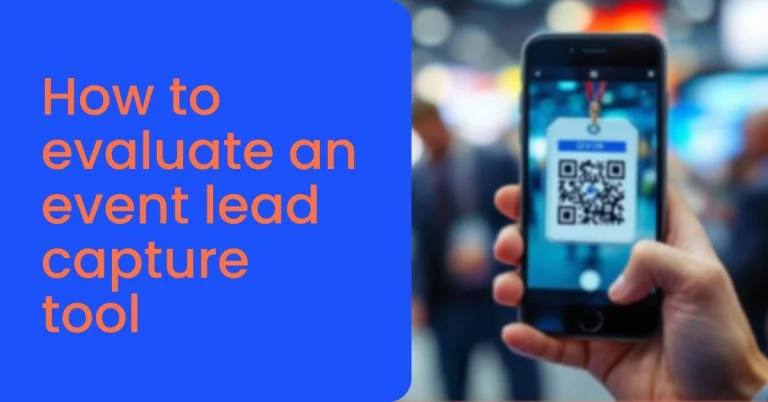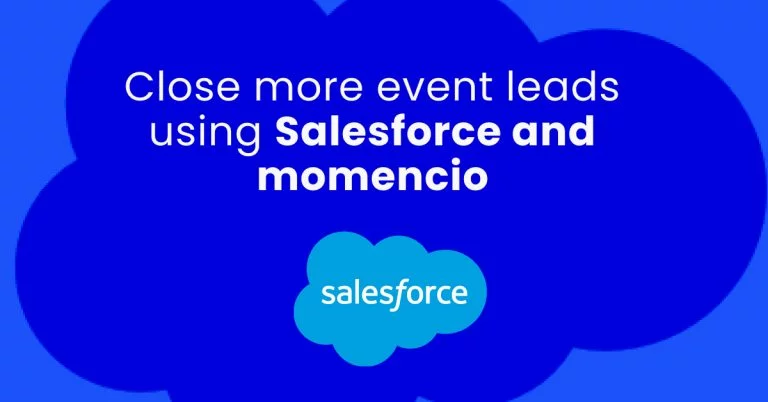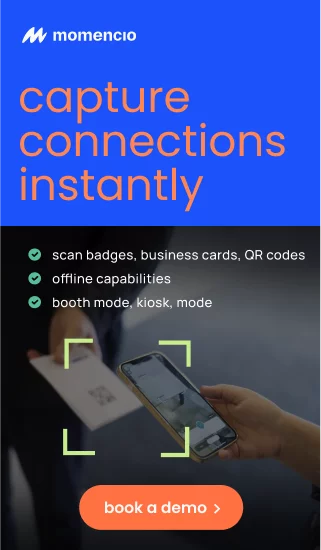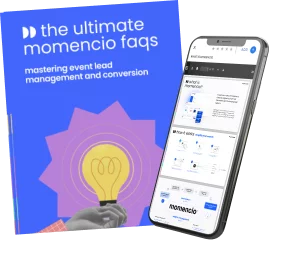Trade shows remain a cornerstone in the realm of B2B marketing, providing unparalleled opportunities for networking, brand exposure, and direct sales. However, the success of participation hinges significantly on effective planning, engagement strategies, and follow-up processes. As per a recent study by the Center for Exhibition Industry Research, 81% of trade show attendees have buying authority, which underscores the importance of optimizing every aspect of the trade show experience. This guide aims to answer 100 crucial questions people ask about trade shows.
FAQs on Trade Shows
Understanding Trade Shows
- What is a trade show? A trade show is a large-scale event organized for companies in a specific industry to display and demonstrate their latest products and services, meet with industry partners and customers, study the activities of rivals, and examine recent market trends and opportunities.
- What is the point of trade shows? The primary purpose of trade shows is to bring together members of a particular industry to display, discuss, and demonstrate their latest products and services. Trade shows provide a unique opportunity for businesses to network with potential clients and partners, enhance brand recognition, and learn about the latest trends and competitors in their industry.
- What are the three types of trade shows? The three main types of trade shows are:
-
- Industry Trade Shows: Focus on a specific industry’s products and services, mainly targeting industry professionals.
- Consumer Trade Shows: Open to the general public, showcasing products and services directly to consumers.
- Hybrid Trade Shows: Combine elements of both industry and consumer trade shows, catering to both professionals and the general public.
- What is the difference between trade shows and fairs? Trade shows are focused events aimed at industry professionals to network, display products, and learn about the latest industry trends. Fairs, on the other hand, are more public-oriented events with a broader focus, including entertainment, education, and merchandise sales, not limited to a specific industry.
- What is the difference between trade shows and consumer shows? Trade shows are designed for industry professionals to network, showcase products, and make business deals. Consumer shows are open to the general public, allowing direct interaction between consumers and companies to sell and promote products directly to the end-user.
- What is the difference between a trade show and a conference? A trade show primarily focuses on product exhibitions and industry networking. In contrast, a conference is centered around discussions, presentations, and educational sessions on specific industry topics, with less emphasis on product displays.
- Is a trade show a convention? While the terms are often used interchangeably, a trade show is more focused on product or service displays and industry networking. In contrast, a convention typically includes a broader program with conferences, workshops, and meetings alongside exhibitions.
- What is the difference between a trade show and an exhibition? Trade shows are industry-specific events for professionals to exhibit products and services, network, and conduct business. Exhibitions are broader and can be cultural, educational, or commercial, focusing on displaying items or artwork to the public or professionals without the explicit intention of immediate business transactions.
- What are the two main types of trade? The two main types of trade are:
-
- Domestic Trade: Buying and selling of goods and services within the same country.
- International Trade: Exchange of goods and services between different countries.
- What are the four major types of trades? The four major types of trades are:
-
- Manufactured Goods Trade
- Commodity Trade
- Services Trade
- Technology and Knowledge Trade
- How many types of trade are there? While trade can broadly be categorized into domestic and international trade, it encompasses various sub-categories based on the nature of transactions, including wholesale, retail, direct and indirect trade, e-commerce, and more, making it challenging to define a specific number of types.
- What are the five examples of trade? Five examples of the trade include:
-
- Wholesale Trading
- Retail Trading
- Exporting and Importing
- E-commerce Trading
- Dropshipping
- What do you call trade? Trade, also known as commerce, refers to the exchange of goods and services between parties in return for other goods, services, or money. It forms the basis of economic activity in any society.
- What is the origin of trade shows? The origin of trade shows can be traced back to medieval Europe’s trade fairs, where merchants traveled to distant towns to exhibit and sell their goods. These fairs were crucial for the exchange of goods and information in an era before modern transportation and communication.
- What was the first trade show? The first trade show is difficult to pinpoint, but one of the earliest known trade fairs is the Leipzig Trade Fair in Germany, which dates back to the Middle Ages (1165). It played a significant role in European trade, serving as a meeting place for merchants from various regions.
- Find here the 50 Largest Trade Shows in the United States and the Top 10 must-visit USA trade shows in 2024
Participation and Preparation – How to Navigate and Excel at Trade Shows
- How do you act at a trade show? At a trade show, act professionally, friendly, and approachable. Engage with attendees, ask open-ended questions to understand their needs, and be ready to provide concise, informative answers about your products or services. Networking is critical, so be prepared to exchange contact information and follow up post-event.
- Can you wear jeans to a trade show? The appropriateness of wearing jeans to a trade show depends on the industry and the event’s dress code. If the trade show has a more casual atmosphere or if jeans align with your brand image, it might be acceptable. However, it’s generally safer to opt for business casual attire if you’re sure of the dress code.
- How do you stand out at a trade show? To stand out at a trade show, create an engaging and visually appealing booth design, offer interactive experiences or live demos, and use technology to draw attention. Providing valuable content, hosting mini-events, and having a unique giveaway can also differentiate you from competitors.
- For a more detailed exploration, check out our article: Designing a Trade Show Booth: Strategies That Engage and Convert.
- How do I participate in trade shows? To participate in trade shows and research events that align with your industry and target audience. Register as an exhibitor, prepare your booth design and marketing materials, and plan logistics well in advance. Train your staff on engagement strategies and set clear goals for what you aim to achieve.
- How do you sell at a trade show? Selling at a trade show involves attracting attendees to your booth, engaging them with compelling demonstrations or presentations, and effectively communicating the value of your products or services. Focus on solving the attendee’s problems and be prepared to answer questions, collect leads, and follow up promptly after the event.
- How do you make a trade show fun? Make a trade show fun by incorporating interactive elements, such as games, contests, or virtual reality experiences. Offering engaging and entertaining demonstrations, photo opportunities, or thematic booth designs can also enhance the enjoyment for attendees.
- Why be an exhibitor in a trade show? Being an exhibitor in a trade show provides valuable opportunities to showcase your products or services, connect with potential customers, gain industry insights, and strengthen your brand’s presence in the market. It’s an effective platform for networking, lead generation, and direct sales.
- What is it called when you have a booth at a trade show? When you have a booth at a trade show, you’re referred to as an “exhibitor.” Your designated area, where you display your products or services and engage with attendees, is typically called a “booth” or “exhibit.”
- How do you get an exhibitor for a trade show? To secure exhibitors for a trade show, organizers should promote the event’s benefits to potential participants, highlighting attendee demographics, networking opportunities, and marketing exposure. Offering early bird discounts, showcasing previous event successes, and providing support for logistics and booth design can also attract exhibitors.
- Who would attend a trade show? Trade shows are attended by industry professionals, including business owners, buyers, suppliers, investors, and media representatives. Depending on the event, they may also attract researchers, educators, and the general public interested in the specific industry.
- Who attends a trade show? In addition to industry professionals, trade shows can also attract stakeholders, potential partners, and competitors. Specific attendee profiles vary based on the trade show’s focus, ranging from tech enthusiasts and healthcare professionals to retail buyers and marketing experts.
- Who works at a trade show? Trade show staff typically include sales representatives, marketing professionals, product specialists, and company executives. Event organizers, vendors, and service providers also work behind the scenes to ensure the event runs smoothly.
- What is trade show staff? Trade show staff refers to the team representing a company or brand at an event. They are responsible for engaging with attendees, demonstrating products or services, collecting leads, and providing information. The staff plays a crucial role in making a positive impression and achieving the company’s trade show objectives.
- How do I choose a trade show? Choose a trade show by considering factors such as the event’s relevance to your industry, target audience demographics, past attendee and exhibitor feedback, geographical location, and the potential for return on investment. Evaluate the event’s marketing reach and alignment with your business goals.
- How do you know if a trade show is worth attending? A trade show is worth attending if it attracts a significant number of attendees from your target market, offers networking opportunities with industry leaders, and has a track record of facilitating meaningful business connections. Assessing past exhibitor success stories, attendee testimonials, and the event’s overall reputation can help determine its value to your business.
- Dive deeper into this topic by exploring our article, momencio overview: Unlocking the Potential of Event Marketing
Trade Show Logistics and Marketing
- Where are most trade shows held? Most trade shows are held in major cities with the necessary infrastructure to support large-scale events, including convention centers, hotels, and accessible transportation. Venues are often selected for their geographic relevance to the industry or target audience.
- How long is a trade show? The duration of trade shows can vary significantly, from one day to a week. However, most trade shows last between two to four days, allowing enough time for exhibitors to connect with attendees and conduct business.
- Are trade shows considered marketing? Yes, trade shows are considered a vital part of marketing strategies, particularly in B2B industries. They provide a unique platform for direct marketing efforts like product demonstrations, networking, and brand promotion to a targeted audience.
- What type of marketing is trade shows? Trade shows are a form of event marketing and face-to-face marketing that allows businesses to interact directly with potential clients, partners, and industry professionals, facilitating personal connections and immediate feedback.
- Are trade shows sales or marketing? Trade shows encompass both sales and marketing elements. They serve as a marketing platform to raise brand awareness and generate leads and as a sales opportunity to engage directly with potential buyers and close deals on the spot.
- For a more detailed exploration, check out our article: The event leads to sales wins: Your Conversion Strategy Guide 2024
- Do trade shows actually work? Yes, trade shows can be highly effective, especially for B2B companies. They offer a concentrated opportunity to showcase products, gather leads, and make sales while also learning about industry trends and competitor offerings.
- What is the value of trade shows? The value of trade shows includes direct access to a targeted audience, opportunities for networking, increased brand awareness, lead generation, direct sales opportunities, and valuable insights into market trends and competitor activities.
- How can trade shows be marketed to potential exhibitors and attendees? Trade shows can be sold through targeted email campaigns, social media, industry publications, partnerships, and word-of-mouth. Offering early registration incentives and showcasing success stories from past events can also attract exhibitors and attendees.
- What are the critical components of a successful trade show marketing plan? Necessary components include clear objectives, targeted promotion, pre-event engagement strategies, compelling booth design, effective on-site engagement tactics, follow-up strategies, and post-event analysis to measure success.
- For a more detailed exploration, check out our article: 10 Essential Event Planning Tips for a Successful Event
- What are common challenges faced in trade show logistics, and how can they be overcome? Common challenges include transportation and setup of exhibits, managing staff and schedules, and coordinating with event organizers. These can be overcome by planning well in advance, employing experienced logistics partners, and maintaining flexible, proactive communication with all parties involved.
- Dive deeper into this topic by exploring our article, The Ultimate FAQ Guide to Event Planning and Management
Costs and Financial Aspects
- Do trade shows make money? Trade shows can be profitable for organizers through booth sales, sponsorships, and attendee registrations. Exhibitors can also achieve a positive ROI through direct sales, lead generation, and long-term business opportunities initiated at the event.
- How much does it cost to set up a booth at a trade show? The cost can vary widely depending on the size of the booth, the location of the trade show, design complexity, and additional services like electricity and Wi-Fi. Costs can range from a few thousand dollars for a basic setup to tens of thousands for larger, more elaborate displays.
- How much does a booth at a trade show cost? The cost of a trade show booth typically includes space rental, design and construction of the booth, marketing materials, technology rentals, travel and lodging for staff, and other logistical expenses. Prices can range from $100 to $150 per square foot on average.
- How much does it cost to sell at a trade show? In addition to the booth costs, selling at a trade show may involve product samples, promotional giveaways, staff training, and follow-up marketing efforts. Total costs can vary widely, but investing in these areas can significantly impact the success of trade show participation.
- What is an example of a trade show budget? An example trade show budget might include:
-
- Booth space rental: $10,000
- Booth design and construction: $15,000
- Travel and lodging for staff: $5,000
- Marketing materials and giveaways: $3,000
- Additional services (Wi-Fi, electricity, cleaning): $2,000
- Pre-show marketing and promotions: $2,000
- Total estimated budget: $37,000
This budget can vary based on the event’s scale, location, and the company’s specific goals and requirements.
- Dive deeper into this topic by exploring our article, Budgeting for Events: The 2024 Event Planners’ Guide to Cost Control and Financial Success
Event Sustainability
- What are the best practices for organizing sustainable trade shows? Best practices include using digital marketing materials to reduce paper waste, selecting venues with solid sustainability policies, encouraging public transportation or shuttle services, utilizing sustainable materials for booths and signage, and implementing recycling and composting programs.
- How can exhibitors contribute to the sustainability of trade shows? Exhibitors can contribute by minimizing printed materials, using energy-efficient lighting, designing reusable booth elements, choosing eco-friendly promotional items, and minimizing waste through careful planning and resource management.
- What role does digitalization play in making trade shows more sustainable? Digitalization reduces the need for physical materials, such as brochures and business cards, through the use of digital marketing materials, electronic lead retrieval systems, and event apps. It also enables virtual participation, reducing travel-related carbon emissions.
- How can trade show organizers minimize waste and carbon footprint? Organizers can reduce waste by choosing venues with sustainability initiatives, using digital communication tools, selecting local suppliers to reduce transportation, offering sustainable catering options, and facilitating waste sorting and recycling at the event.
- What are examples of sustainable materials for trade show booths and signage? Examples include recycled plastics, bamboo, FSC-certified wood, biodegradable materials, and LED lighting. Renting booth structures and furniture can also contribute to sustainability efforts.
Trade Show Gamification
- What is gamification in the context of trade shows? Gamification at trade shows involves incorporating game elements into the event experience to engage attendees. This can include challenges, competitions, scavenger hunts, and interactive quizzes related to the exhibitors’ products or services.
- How can gamification enhance attendee engagement at trade shows? Gamification makes the event experience more interactive and enjoyable, encouraging attendees to explore more booths, participate in activities, and stay engaged with the content, leading to a memorable event experience.
The Power of Gamification at Events: Level Up Your Event
- What are some effective gamification strategies for trade shows? Effective strategies include leaderboard challenges, AR (Augmented Reality) scavenger hunts, trivia quizzes about products or industry knowledge, reward-based check-ins at different booths, and interactive product demos.
- How do you measure the success of gamification at trade shows? Success can be measured by increased booth traffic, higher levels of participant interaction, greater social media engagement, more leads collected, and positive feedback from attendees and exhibitors.
- Can gamification lead to increased lead generation at trade shows? Yes, gamification can significantly increase lead generation by encouraging attendees to interact with your brand and products in a fun and engaging way, making them more likely to leave their contact information.
- How can exhibitors integrate mobile apps with gamification elements to engage attendees? Exhibitors can create event-specific apps that include gamified elements like check-in rewards, interactive maps with hidden rewards, QR code scavenger hunts, and real-time contests or polls.
- What are the best practices for designing a gamified trade show experience that aligns with brand objectives? Best practices include ensuring the games are relevant to the brand and products, setting clear goals, making participation easy and inclusive, offering meaningful rewards, and providing a seamless integration with the overall event experience.
- How can gamification be used to facilitate networking among trade show participants? Gamification can encourage networking by incorporating team challenges that require collaboration, creating networking quests that reward meeting new people, and using social media challenges that foster connections both online and offline.
- What are the challenges of implementing gamification in trade shows, and how can they be addressed? Challenges include ensuring technology compatibility, maintaining engagement throughout the event, and measuring ROI. These can be addressed by thorough testing, offering diverse and inclusive game options, and using analytics tools to track engagement.
- Uncover further strategies and insights in our dedicated piece: 10 proven strategies for boosting event ROI and engagement.
- How can the effectiveness of gamification in increasing booth traffic be evaluated? The effectiveness can be assessed by comparing booth traffic and lead generation metrics before and after implementing gamification, surveying attendees about their experience, and analyzing engagement levels with the gamified element
Innovative Engagement Strategies for Trade Shows
- What are innovative ways to increase attendee engagement at trade shows? Utilizing AR (Augmented Reality) and VR (Virtual Reality) for immersive product demonstrations, hosting live contests and giveaways, implementing gamification strategies, and creating personalized agendas or recommendations based on attendee interests are innovative ways to boost engagement.
- How can technology be used to enhance interaction between exhibitors and attendees? Technology can be used through mobile event apps for networking, scheduling, and navigation; interactive touchscreens for product exploration; RFID and beacon technology for personalized content delivery; and social media integration for real-time engagement.
- What role does social media play in engaging trade show audiences before, during, and after the event? Social media is crucial for creating buzz around the event, facilitating conversations and networking opportunities during the show, and maintaining connections post-event. Live updates, behind-the-scenes content, and interactive polls or contests can enhance audience engagement.
- How can live demonstrations and interactive presentations boost attendee participation? Live demos and interactive presentations capture attention and provide hands-on experiences with products or services, making information more memorable and encouraging active participation and questions from the audience.
- What are the benefits of hosting panel discussions and workshops at trade shows? Panel discussions and seminars facilitate knowledge sharing, provide value to attendees, foster discussions on industry trends and challenges, and offer networking opportunities, enhancing the overall trade show experience.
- What techniques can be employed to facilitate meaningful connections between attendees and exhibitors? Creating networking zones, using matchmaking apps or services to connect similar interests, hosting industry-specific meetups or roundtables, and encouraging social media interactions are effective techniques for facilitating connections.
- How can feedback mechanisms be integrated into trade show activities to improve engagement? Implementing real-time surveys or polls through mobile apps, offering incentives for feedback submission, and setting up interactive feedback stations are ways to gather attendee insights and demonstrate that their opinions are valued.
- Dive deeper into this subject by reading our comprehensive guide: Event Improvement: A Comprehensive Guide.
- In what ways can personalized experiences be created for trade show attendees? Personalized experiences can be made through customized agendas based on attendee interests, targeted recommendations for sessions or booths to visit, and personalized follow-up communications post-event.
- How can photo and video content be leveraged to boost attendee interaction at trade shows? Setting up photo booths with branded props, encouraging user-generated content with event-specific hashtags, and producing live video streams of keynotes or interviews can increase engagement and reach.
- What role do influencers and industry leaders play in enhancing event engagement? Influencers and industry leaders can draw larger audiences, lend credibility, and amplify event messaging through their networks. Hosting them as speakers or having them share their event experiences on social media can significantly boost engagement.
- What role do event apps play in boosting engagement and interaction at trade shows? Event apps facilitate personalized schedules, direct messaging between attendees, live polls and feedback, event navigation, and access to speaker materials, enhancing the overall experience and interaction.
- How can virtual and hybrid elements be incorporated to increase engagement for those not physically present? Offering live streaming of sessions, virtual networking opportunities, and digital exhibitor booths can engage remote attendees. Hybrid events that blend physical and digital experiences can significantly extend reach and participation.
- What techniques can be used to encourage interaction between attendees and exhibitors? Encouraging pre-event meetings through apps, creating interactive booth experiences, and facilitating post-event connections via follow-up communications can enhance interaction between attendees and exhibitors.
- How can feedback mechanisms be integrated into events to measure and improve attendee engagement? Using mobile apps for instant feedback, conducting post-event surveys, and monitoring social media for real-time reactions can provide valuable insights to measure and enhance future event engagement.
- Enhance your understanding with additional information available in our article: Strategies for Post-Event Data Utilization: Fueling Growth and Engagement.
- What are the challenges of engaging an international audience, and how can they be addressed? Challenges include language barriers, cultural differences, and time zones. Offering multilingual support, culturally relevant content, and on-demand access to event materials can help engage an international audience effectively.
Trade Show Leads Generation and Follow-up / Maximizing Lead Generation and Engagement at Trade Shows
- What strategies can exhibitors use to maximize lead generation at trade shows?
-
- Engage in pre-event marketing to generate interest.
- Offer compelling, interactive demonstrations or experiences at your booth.
- Utilize social media and event hashtags to drive booth traffic.
- Provide exclusive offers or content for trade show attendees.
- Employ lead capture technology for efficient data collection.
- How can leads from trade shows be effectively categorized and followed up?
-
- Use lead scoring to prioritize follow-up based on potential interest or buying power.
- Categorize leads based on product interest, industry, or specific needs.
- Implement a CRM system to organize and manage lead data.
- Develop a structured follow-up plan that includes personalized emails, calls, and meetings.
- What are the best practices for converting trade show leads into sales?
-
- Follow up promptly while your interaction is still fresh in the lead’s mind.
- Personalize communication based on the lead’s expressed interests and needs.
- Offer special incentives or discounts that were mentioned at the trade show.
- Maintain regular, value-added contact to nurture leads through the sales funnel.
- How can technology assist in tracking and managing leads from trade shows?
-
- CRM software is used to store and manage lead information and follow-up activities.
- Implement lead retrieval apps to capture lead data at the point of contact digitally.
- Utilize analytics tools to track engagement levels and follow-up effectiveness.
- Employ marketing automation for timely, personalized follow-up campaigns.
Learn more: The Importance of Standardizing and Unifying Your Lead Retrieval Process.
- What role does post-event communication play in maintaining the interest of leads generated at trade shows?
-
- Keeps your brand top-of-mind through regular, informative updates.
- Allows for the nurturing of leads with tailored content that addresses their specific interests and pain points.
- Offers a platform to deepen relationships through continued engagement and value addition.
Learn more: Maximizing post-event engagement: A comprehensive Q&A guide.
- What techniques can be employed to facilitate meaningful connections between attendees and exhibitors?
-
- Networking Events: Organize or participate in networking mixers or social events related to the trade show to foster informal interactions.
- Matchmaking Services: Use event apps or services that match exhibitors with attendees based on mutual interests or business needs.
- Interactive Booths: Design your booth to encourage active participation, such as through VR experiences, hands-on demos, or Q&A sessions, making it easier for attendees to engage in meaningful conversations.
- Direct Engagement Strategies: Train booth staff to initiate conversations that go beyond sales pitches, focusing on understanding attendees’ challenges and how your offerings can provide solutions.
- How can feedback mechanisms be integrated into trade show activities to improve engagement?
-
- Live Polls and Surveys: Utilize event apps to conduct live polls or surveys during presentations or demos to gather instant feedback and adjust your engagement strategies accordingly.
- Feedback Stations: Set up kiosks or tablets within your booth where attendees can quickly leave feedback about their experience.
- Post-Event Surveys: Send surveys to attendees after the trade show to gain insights into their experiences and suggestions for improvement.
- Social Media Listening: Monitor social media channels for mentions, feedback, and discussions related to your booth or products, providing another channel for engagement and improvement.
- In what ways can personalized experiences be created for trade show attendees?
-
- Tailored Recommendations: Use event apps or registration information to provide attendees with personalized agendas, suggesting booths, sessions, and networking opportunities that match their interests.
- Customized Follow-Ups: Segment your leads based on their interests or interactions at your booth and follow up with customized content or offers.
- Personal Engagement: Offer one-on-one meetings or demos for high-value leads, providing a more personalized and in-depth exploration of your products or services.
- How can photo and video content be leveraged to boost attendee interaction at trade shows?
-
- Social Media Challenges: Encourage attendees to post photos or videos interacting with your booth on social media with a specific hashtag for a chance to win prizes.
- Live Streaming: Stream live presentations or demos on social media platforms to engage both physical and virtual attendees.
- Photo Booths: Set up themed photo booths with props related to your products or industry, making for shareable and memorable content.
- What role do influencers and industry leaders play in enhancing event engagement?
-
- Speaker Sessions: Invite influencers or industry leaders to speak at your booth or during event sessions, drawing in crowds and increasing the credibility of your brand.
- Collaborations: Collaborate with influencers to promote your trade show presence ahead of the event and to engage with attendees at your booth.
- Social Media Takeovers: Allow influencers to take over your social media accounts during the trade show to provide insider views and promote engagement.
- What role do event apps play in boosting engagement and interaction at trade shows?
-
- Personalized Agendas: Enable attendees to create personalized agendas within the app, including reminders for sessions, meetings, and booth visits.
- Networking Features: Offer features like in-app messaging, meeting scheduling, and attendee matchmaking to facilitate connections.
- Engagement Tools: Incorporate gamification, live polls, and feedback mechanisms within the app to keep attendees engaged and gather valuable data.
- How can virtual and hybrid elements be incorporated to increase engagement for those not physically present?
-
- Virtual Booths: Offer virtual booth experiences for those who cannot attend in person, including live chats and virtual product demos.
- Hybrid Sessions: Stream sessions live and offer virtual Q&A opportunities, allowing remote attendees to participate actively.
- On-Demand Content: Make session recordings and additional content available on-demand for attendees across different time zones.
- What techniques can be used to encourage interaction between attendees and exhibitors?
-
- Scheduled Meetings: Allow attendees to schedule meetings with exhibitors through the event app or website, ensuring dedicated interaction time.
- Product Demos: Schedule regular product demos at your booth to draw crowds and facilitate discussions.
- Interactive Displays: Use touchscreens or augmented reality displays where attendees can explore your products or services at their own pace, prompting questions and interactions.
- How can feedback mechanisms be integrated into events to measure and improve attendee engagement?
-
- Instant Feedback: Implement QR codes at your booth that attendees can scan to rate their experience or leave comments quickly.
- Dedicated Feedback Time: Allocate time during presentations or demos for live feedback and Q&A, adjusting your engagement strategies in real-time.
- Follow-Up Feedback: Include feedback questions in your post-event communication to gauge attendee satisfaction and gather insights for future improvements.
- What are the challenges of engaging an international audience, and how can they be addressed?
-
- Language Barriers: Offer multilingual support in marketing materials, booth signage, and staff to make content accessible.
- Cultural Differences: Understand and respect cultural nuances in communication styles and business practices. Tailor your approach to fit the cultural context of your audience.
- Time Zones: When planning virtual or hybrid elements, schedule sessions at times that are accessible to attendees across different time zones or offer on-demand content.
- Accessibility: Ensure digital platforms and content are accessible internationally, considering different internet access levels and digital literacy rates.
- Legal and Compliance Issues: Be aware of and comply with international trade and privacy laws when collecting and handling data.
In addressing these challenges, exhibitors can create a more inclusive, engaging experience for a diverse international audience, maximizing the potential reach and impact of their trade show participation.
Trade Show Technology and Innovation
- What are the latest technological innovations impacting trade shows? The latest innovations include augmented reality (AR) and virtual reality (VR) for immersive product demos, artificial intelligence (AI) for personalized attendee experiences, real-time data analytics for attendee behavior tracking, and mobile event apps for enhanced networking. Additionally, blockchain is emerging as a tool for secure transaction processing and attendee verification.
- How can virtual reality (VR) and augmented reality (AR) be used at trade shows? VR and AR can be utilized to create immersive, interactive product demonstrations, allowing attendees to explore products or environments in a virtual space. AR can enhance physical booth elements by overlaying digital information onto real-world objects, while VR can transport users to entirely virtual settings for detailed product interactions or simulations.
- What are the benefits of using mobile apps specifically designed for trade show attendees? Mobile apps offer personalized schedules, map navigation, session booking, networking opportunities, and real-time updates about the event. They can improve the attendee experience by making it easier to plan their visit, connect with others, and access event information seamlessly.
- How can data analytics improve the planning and execution of trade shows? Data analytics can provide insights into attendee behavior, preferences, and engagement levels, allowing organizers to tailor event content, layout, and marketing strategies more effectively. Analyzing data post-event can also identify successful elements and areas for improvement for future planning.
- What are the implications of blockchain technology for trade shows and events? Blockchain can enhance security and transparency for event transactions, registrations, and attendee verification. It offers a secure platform for managing digital tickets, protecting intellectual property rights for exhibitors, and ensuring the integrity of attendee data.
- How are data and badge scanners evolving to enhance attendee and exhibitor experiences at trade shows? Data and badge scanners are becoming more sophisticated, offering quick and efficient lead capture, instant data entry into CRM systems, and personalized attendee information for exhibitors. They’re also being integrated with mobile apps to facilitate seamless information exchange and engagement tracking.
- Dive deeper into this topic by reading our comprehensive guide: Trade Show Badge Scanner Apps For Lead Capture. An In-Depth Guide for 2024
- What are the latest trends in digital presentation technology for trade shows? Interactive touchscreens, large-format video walls, holographic displays, and 3D projection mapping are trending, providing dynamic and engaging ways to present products and services. These technologies can captivate attendees’ attention and deliver memorable brand experiences.
- How can tools that capture and engage audiences be effectively integrated into trade show booths? Engagement tools like live polling, social media walls, interactive quizzes, and gamification can be integrated through mobile apps and interactive displays. These tools encourage participation, create buzz, and gather valuable attendee feedback in real-time.
- What are the privacy and data security considerations when using technology to capture attendee information? Compliance with data protection regulations (e.g., GDPR) is crucial. Consent should be obtained before collecting data, and clear information should be provided on its use. Secure storage and handling of data, along with transparent privacy policies, are essential to protect attendee information.
- How can real-time data analytics improve event management and attendee satisfaction at trade shows? Real-time analytics can track foot traffic, session attendance, and engagement levels, allowing organizers to make on-the-fly adjustments to schedules, booth staffing, and content delivery. This responsiveness can enhance the attendee experience and maximize engagement opportunities.
- What innovations in engagement tools are proving most effective in capturing the attention of trade show attendees? AR/VR experiences, AI-powered recommendations, and personalized content delivery are highly effective. Interactive and immersive experiences that resonate personally with attendees tend to capture attention and foster memorable engagements.
- How is artificial intelligence being used to tailor the trade show experience for individual attendees? AI is used to analyze attendee data and behavior to offer personalized recommendations for sessions, exhibitors, and networking opportunities. AI chatbots can provide instant assistance and information, enhancing the attendee’s journey through tailored interactions.
- What are the challenges in implementing advanced technology solutions at trade shows, and how can they be overcome? Challenges include high costs, technical difficulties, and the need for attendee tech adoption. Overcoming these requires careful planning, investment in reliable technology partners, and providing attendees with clear instructions and benefits for using the technology.
- How do digital and interactive displays change the dynamics of exhibitor-attendee interactions? Digital and interactive displays facilitate more engaging and dynamic interactions, allowing attendees to control their experience and discover information engagingly. This interactive element can lead to deeper conversations and stronger connections between exhibitors and attendees.
- How can technology facilitate better accessibility and inclusivity at trade shows? Technology can provide real-time translation services, voice-to-text for hard-of-hearing attendees, and virtual event components for those unable to attend in person. Making content accessible in various formats ensures all attendees can fully participate and benefit from the trade show experience.
- Uncover additional strategies and tips in our feature article: The role of Technology in Maximizing Event ROI
Embracing Technology and Innovation for Future Trade Shows
The landscape of trade shows is undergoing a remarkable transformation, driven by rapid advancements in technology and a growing emphasis on sustainability and inclusivity. As we’ve explored, from the integration of AR/VR to the application of AI and real-time analytics, technology is not just enhancing the trade show experience—it’s redefining it.
For exhibitors and organizers alike, the future of trade shows lies in leveraging these innovations to create more engaging, efficient, and meaningful events. By adopting digital presentation technologies, engagement tools, and data analytics, trade shows can offer personalized experiences that meet the evolving expectations of attendees while also addressing the challenges of an increasingly global audience.
Moreover, the shift towards virtual and hybrid events in response to global challenges has highlighted the importance of flexibility and adaptability in event planning. These formats not only extend the reach of trade shows but also open up new avenues for interaction and engagement that were previously untapped.
However, with the integration of advanced technologies comes the responsibility to ensure privacy, data security, and accessibility. As we move forward, a balanced approach that prioritizes the needs and safety of all participants will be crucial in harnessing the full potential of these innovations.
In conclusion, the future of trade shows is bright and boundless. By embracing technology and innovation and by fostering an environment of inclusivity and sustainability, trade shows can continue to be pivotal platforms for connection, discovery, and growth in every industry. As we look to the future, let’s reimagine the possibilities of trade shows, transforming them into even more dynamic, impactful, and engaging experiences for everyone involved.
What’s the ultimate tool to turn trade show leads into sales?
In wrapping up our comprehensive journey through the FAQs of trade shows, from the latest in technological innovations to strategies for maximizing attendee engagement and lead generation, it’s clear that the success of your trade show participation hinges not just on the knowledge of these elements but also on how effectively you can implement them into your strategy. That’s where momencio steps in, bridging the gap between traditional trade show practices and the cutting-edge demands of today’s digital, fast-paced world.
momencio is designed to empower exhibitors and organizers, offering tools that streamline the lead capture process, enhance attendee engagement through personalized follow-ups, and leverage data analytics to refine event strategies. Whether you’re navigating the complexities of organizing sustainable trade shows, looking to integrate AR/VR for a more immersive attendee experience, or seeking to make meaningful connections through advanced engagement tools, momencio offers a unified platform that caters to all these needs and more.
With momencio, you’re not just participating in trade shows; you’re redefining the experience for yourself and your attendees. From ensuring every lead is captured and nurtured to providing insights that shape better, more engaging future events, momencio is your partner in transforming trade show challenges into opportunities for growth and engagement.
As we continue to explore the possibilities that trade shows present, remember that with momencio, you have the power to not only keep pace with the evolving landscape but to set the trends, making every event a landmark of success. Embrace momencio today, and transform your trade show experience into a journey of unparalleled engagement and effectiveness. Book a demo today.
Research Sources
- Center for Exhibition Industry Research: https://www.ceir.org
- Trade Show News Network: https://www.tsnn.com
- Event Marketer: https://www.eventmarketer.com
